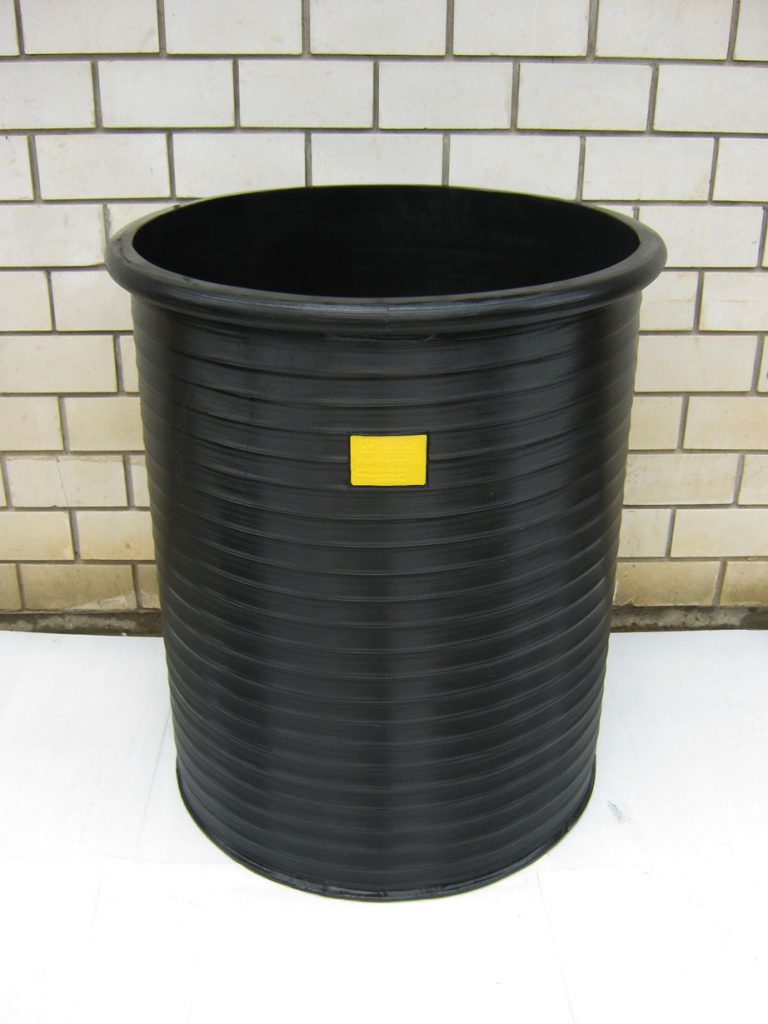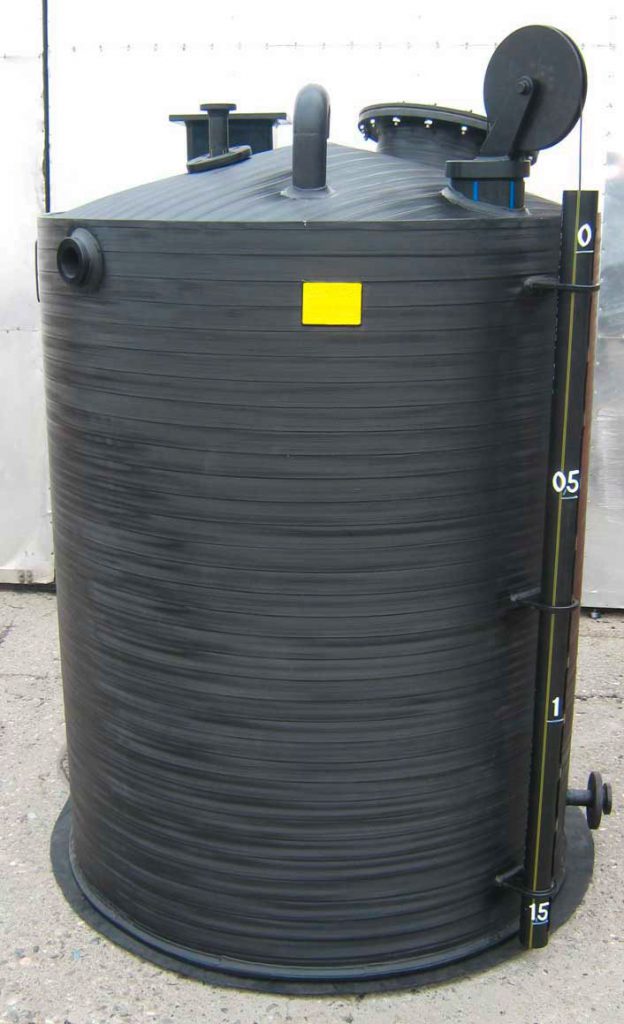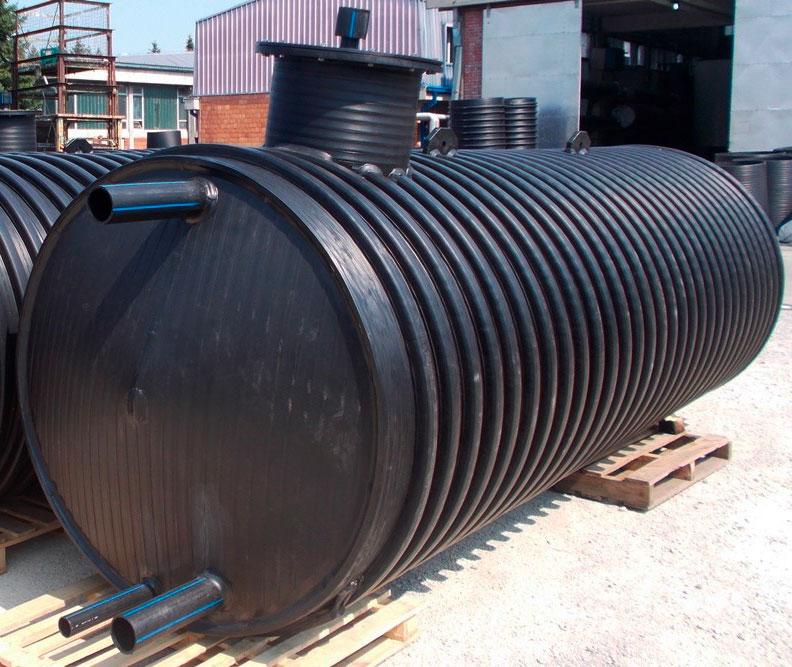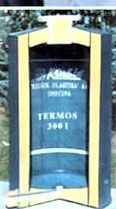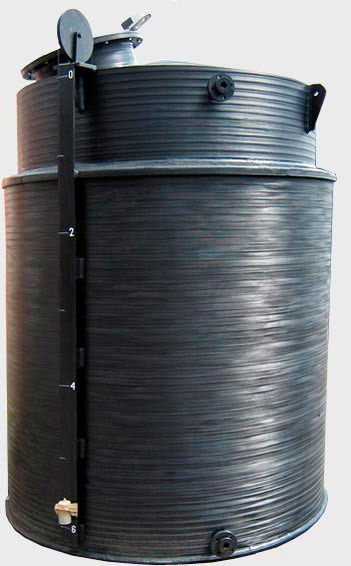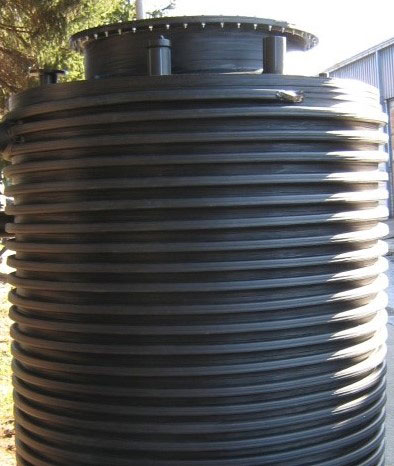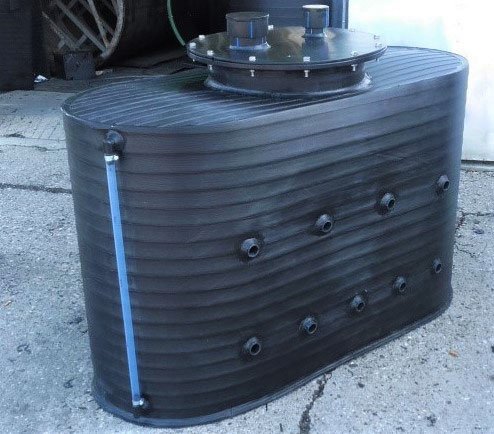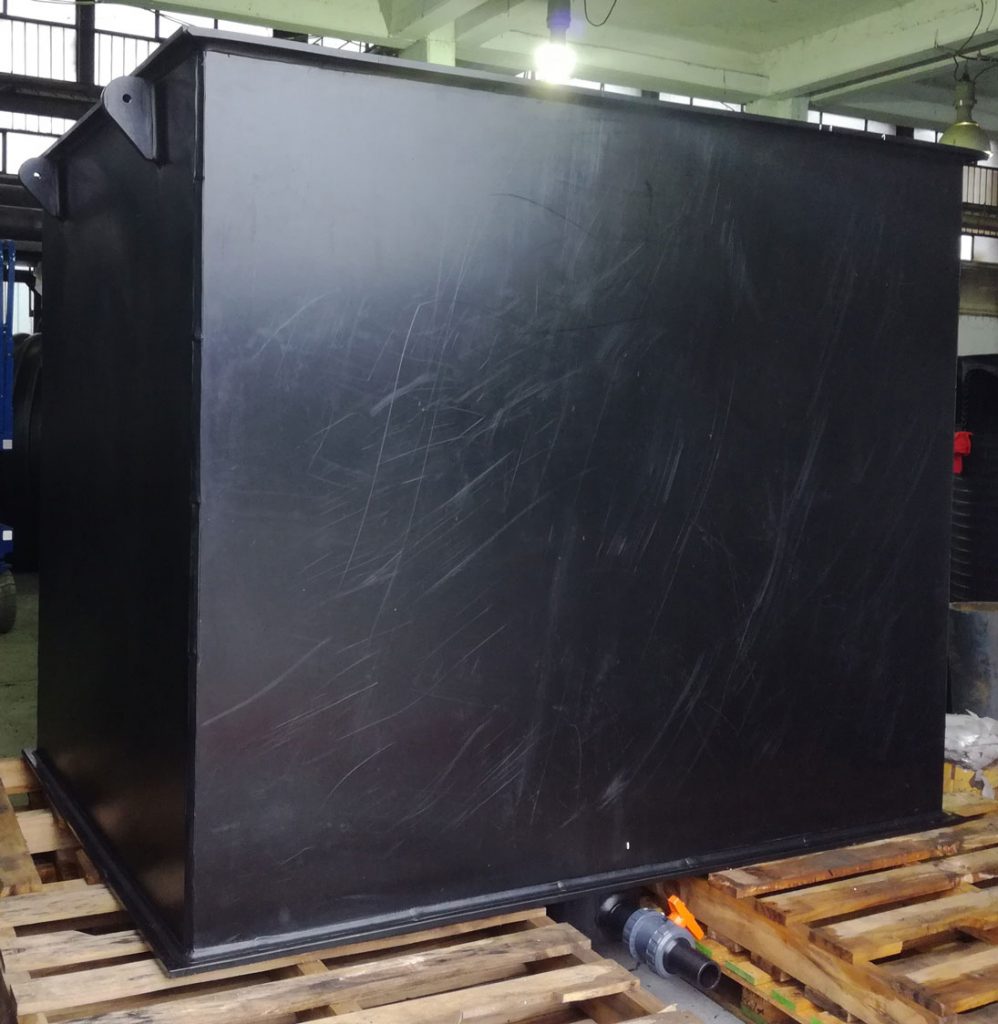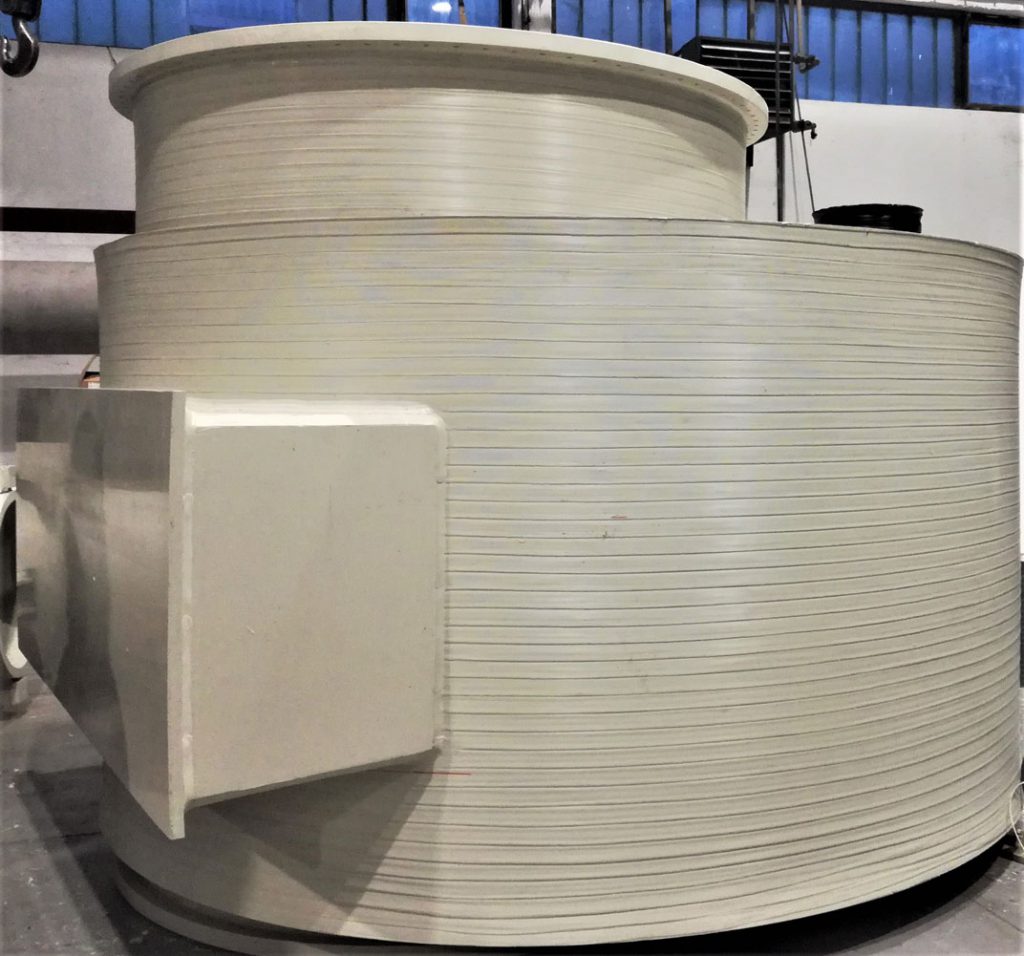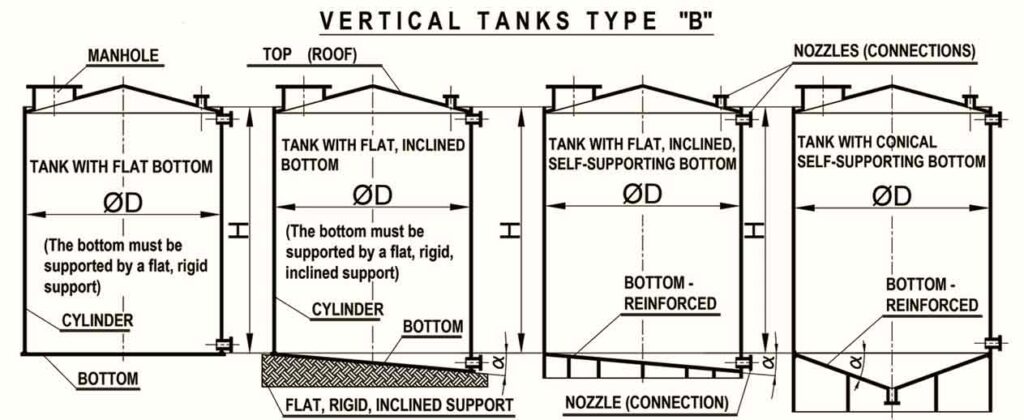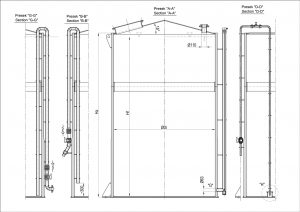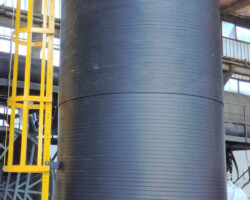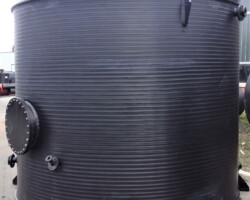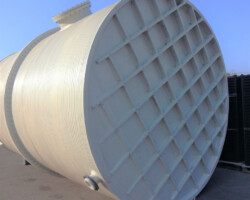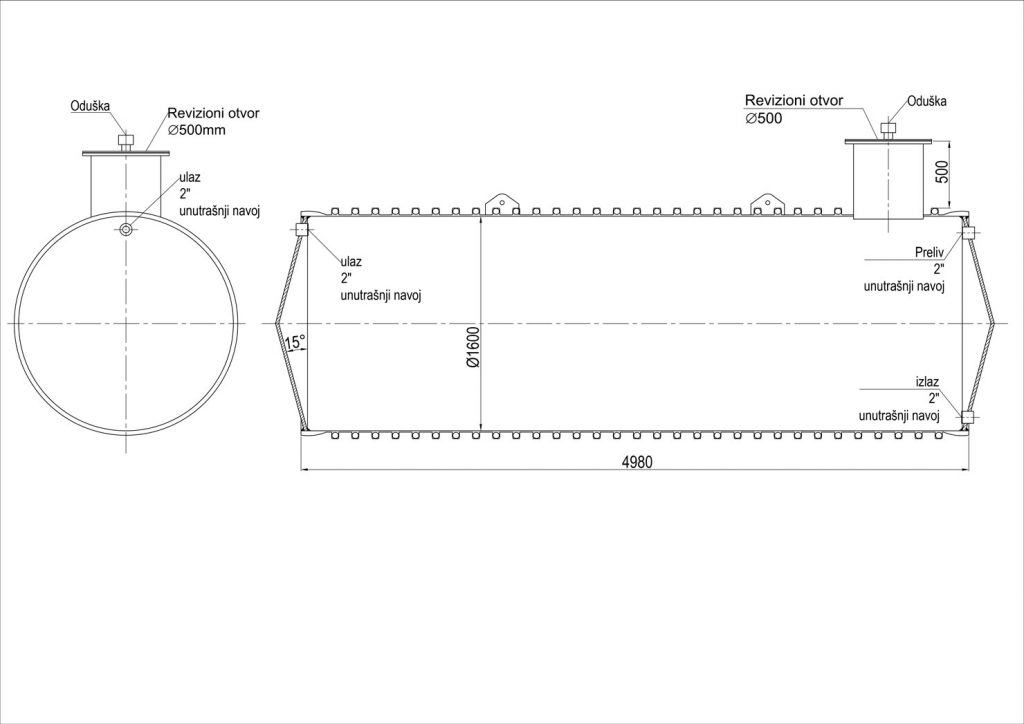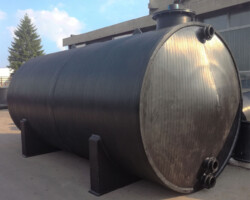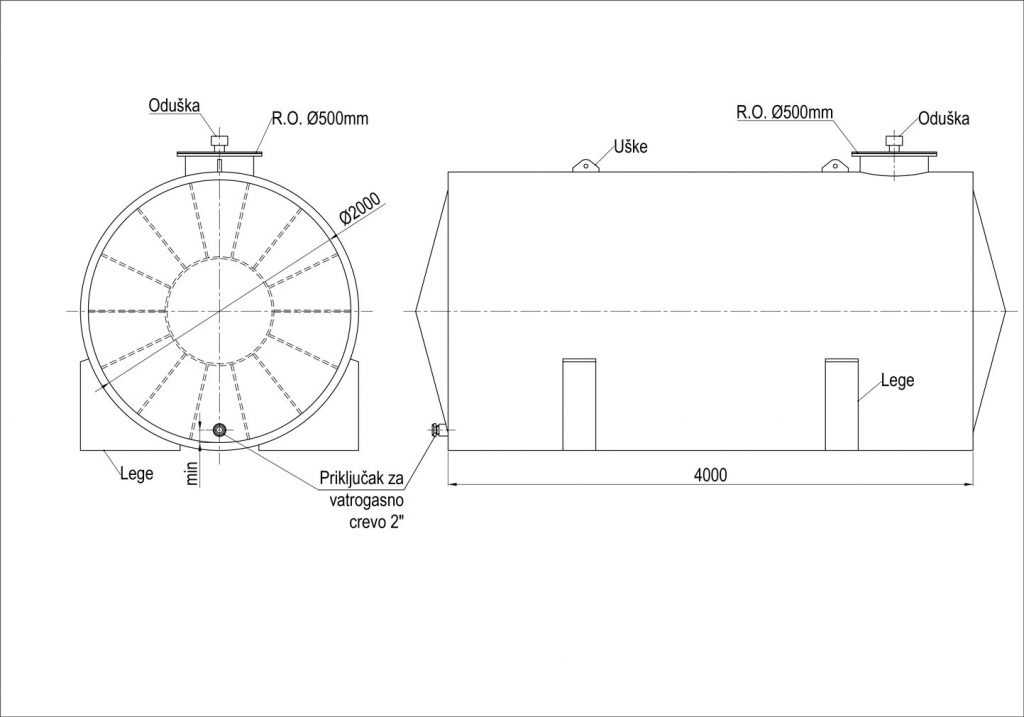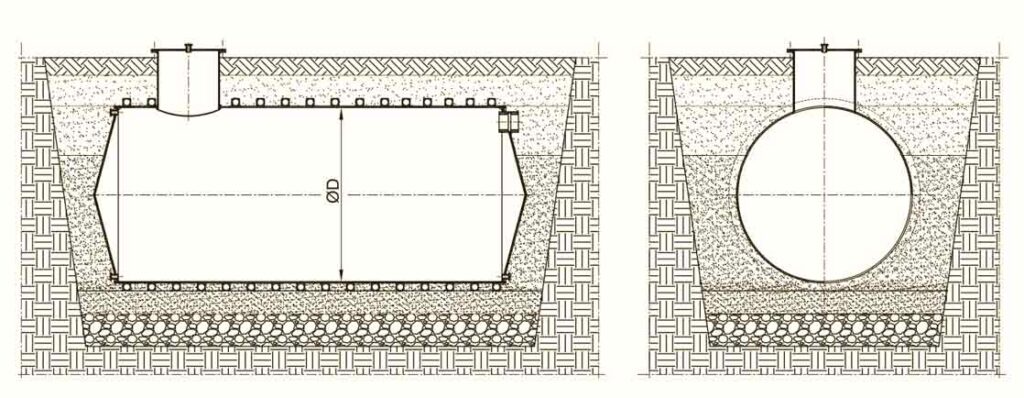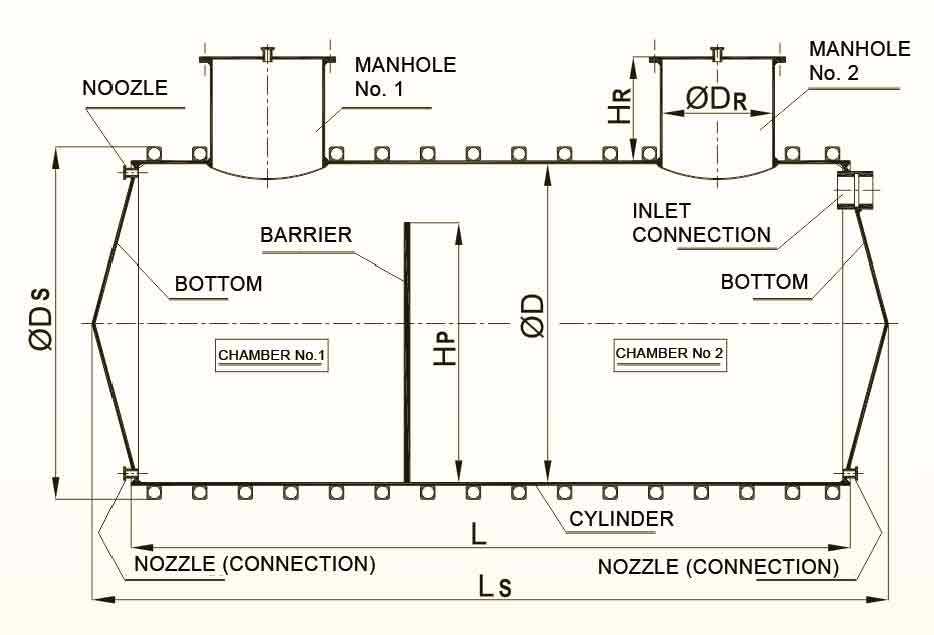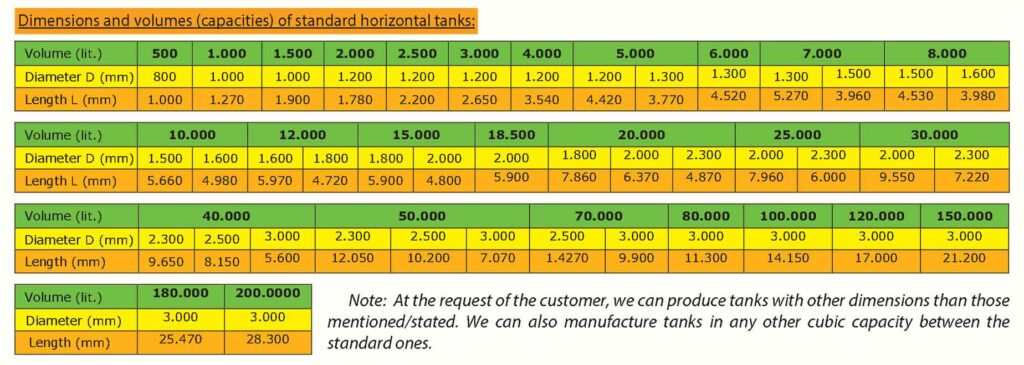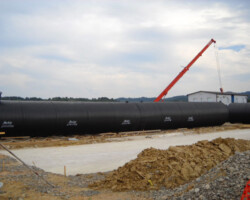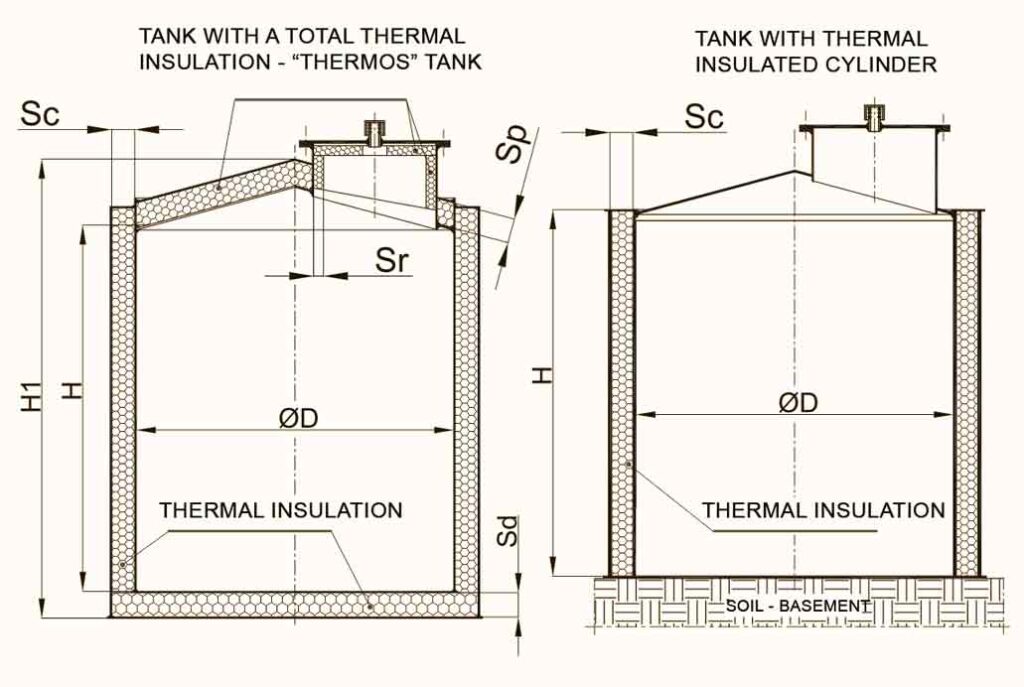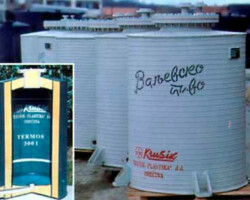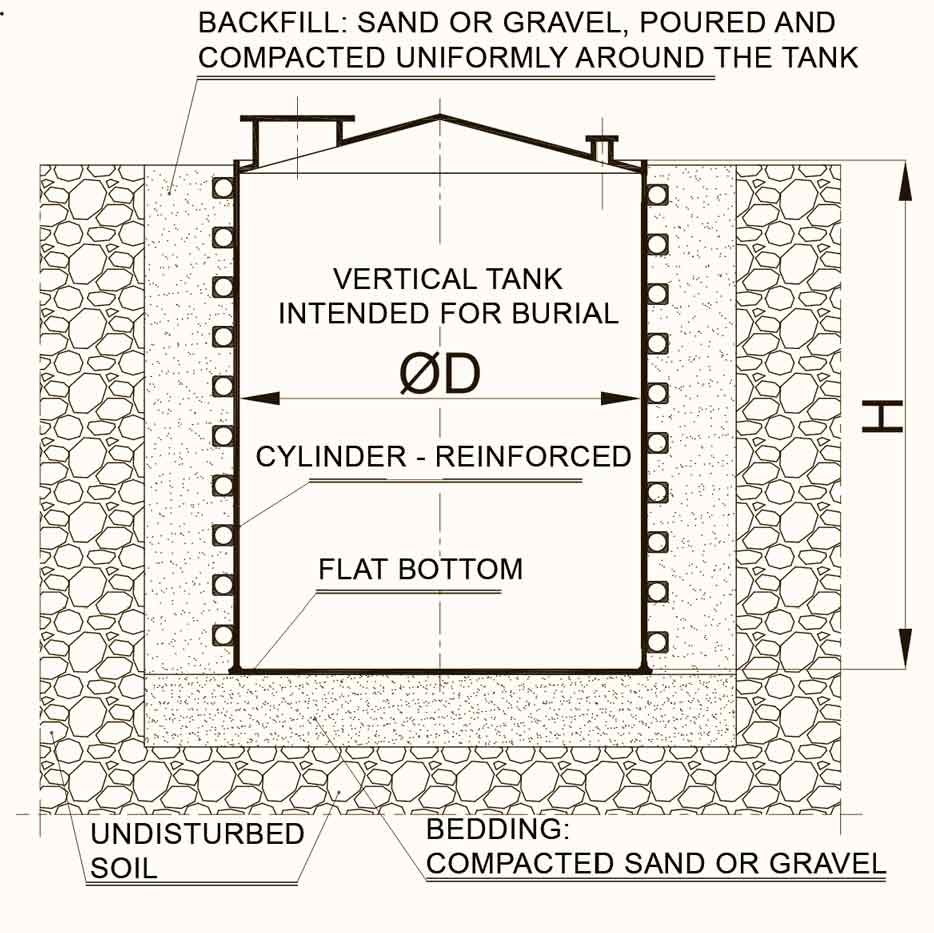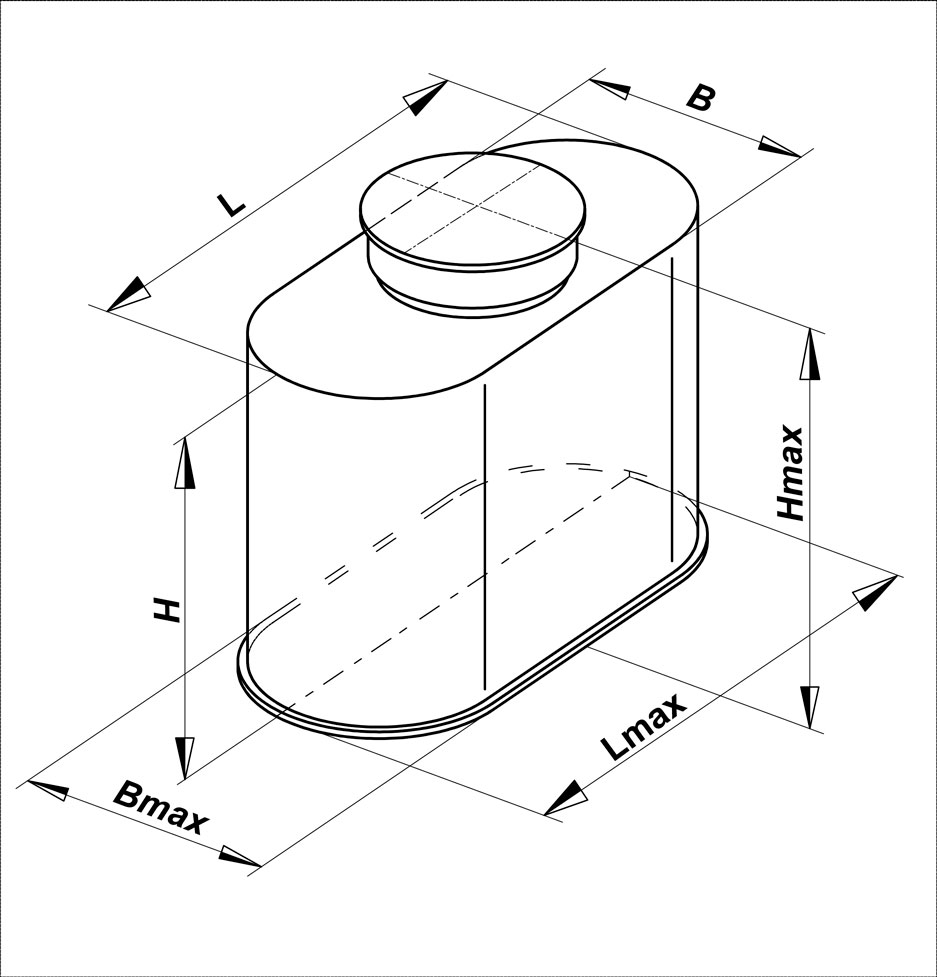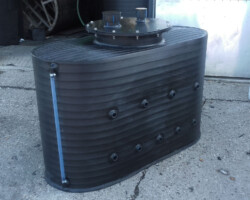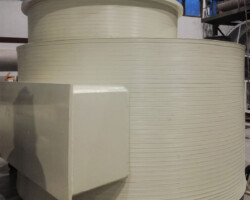Plastic tanks for water, oil and greese, waste water treatment...
Krušik spiral plastic tanks are manufactured in combination of two techniques – spiral extrusion winding and extrusive welding of polyethylene (HDPE) or propylene (PP), capacity of up to 20000 liters (200 m3) and nominal diameter up to Ø 3 200 mm.
Due to the extraordinary characteristics of materials (durability, resistance to chemical and weather conditions, resistance to UV emission, permitted food contact, neither gives away nor absorbs smells, has no influence on the content and environment, resistance to abrasion…) and their construction possibilities, the tanks have been used widely in almost every field of life and economy:
- water supply – storage of drinking and industrial waters;
- industry – storage of chemicals, powdery, granulation and dispersive materials, induction and storage of waste waters and dangerous materials, storage of mineral oils and petroleum products, storage of pharmaceutical products, glycol and antifreeze, detergents and liquid soap; they can serve as processing tanks and reactors – for mixing and dosage of substances, etc.;
- environment protection – in waste waters processing plants, induction and treatment of waste waters (cesspits, oil and fat separators, bio-cleaners and bio-cesspits), for treatment of waste gases (scrubbers, absorbers);
- pre-treatment plants for drinking water – storage and dosage of neutralization substances, water disinfection, etc.;
- agriculture and food processing industry – irrigation, storage of liquid and solid mineral fertilizers, storage of grains, stock-feed, fruit and vegetables fermentation, storage of raw materials for food and drink production, etc.
Main advantages of Krušik spiral tanks compared to the tanks made of traditional materials (concrete, steel, polyester and materials strengthened with glass fibers – GRP) are as follows:
- better chemical stability to most of the chemicals and aggressive materials;
- better resistance to corrosion, abrasion and electrolyte stability;
- a longer lifetime (50 years without any changes) and a larger resistance to weather impacts;
- easier to manipulate, clean and maintain; do not pollute the environment nor influence the content inside the tank, disable development of algae and bacteria;
- they are absolutely safe for storage of food, drink and food processing supplies/provisions – EU Commission Regulation 10/2011.
The tanks are designed and manufactured in accordance with European norms – standards EN 12573:2000 (parts 1, 2, 3 and 4) and EN 1778:2000, as well as the German technical standard ATV-DVWK-A 127.
We can deliver appropriate accompanying documentation with every single tank or vessel:
- static calculation (the calculation of load capacity) in accordance with the mentioned standards;
- certificates on the raw material that the product is made of;
- certificates of the welders of plastic materials
- certificates on the health safety – food contact
- report on the final inspection of the product.
Krušik spiral tanks are manufactured in the following basic types:
- Vertical open-top tanks – vats – type A,
- Vertical closed-top tanks – type B,
- Horizontal tanks – type C,
- Thermal insulated tanks – type D,
- Double-wall (double-skin) tanks– type E,
- Vertical tanks for burial (vertical underground tanks) – type F,
- Eliptic tanks – type G,
- Rectangular tanks – basins,
- Vessels of a special shape.
Vats – vertical open-top tanks – type A
Krušik Plastika a.d. is the first among the companies in former Yugoslavia that designed and produced plastic vats – during 1970s. Thanks to its extraordinary characteristics and practically universal usage, the vat has been used not only in agriculture and households, which was its original purpose, but also in industry and almost all fields of production.
They are primarily used for fruit fermentation (in producing fruit brandy, wine, vinegar…) and vegetables conservation (pickling vegetables like cabbage etc.), then for water storage, storage of various chemicals, powdery and granulation materials, grains, livestock food etc. The vats are absolutely safe regarding health, of which we possess the certificate from the appropriate authorities. Their lifetime is 50 years minimum, they are durable and resistant to all weather impacts, they are quite easy to clean, maintain and handle.
As the other tanks, they also can be equipped with any kind of fitting – taps, level indicators, etc. As an addition to a vat we can produce moveable covers (lids) in two options – outer, “covering” lid and inner, “floating” lid. The “floating” lid is mainly used in vats for pickling vegetables and storage of wine, where a layer of linen oil is poured in the space between the floating lid and the vat cylinder. By this way, an appropriate tightness of the vat is achieved, so that the wine inside the vat cannot react with the oxygen from the air.
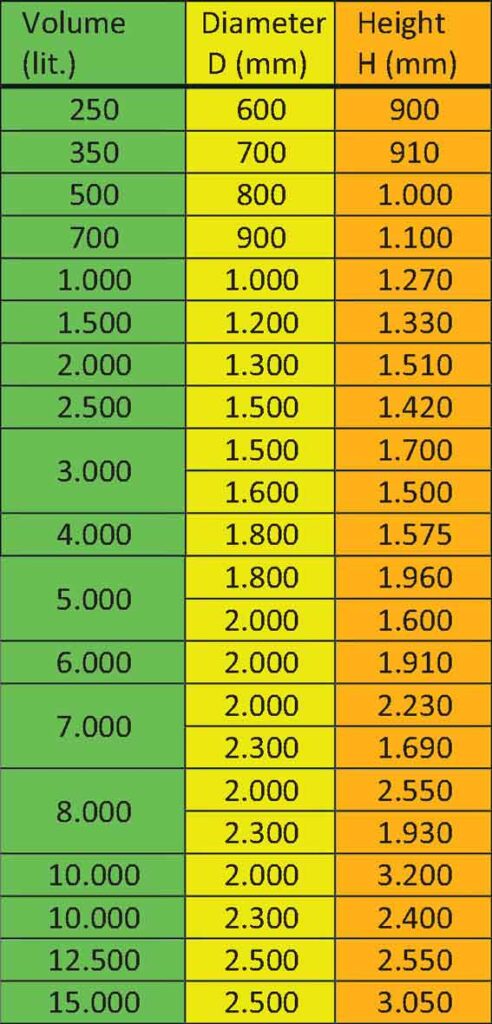
A special type of vats that we produce, and which has a wide usage in fruit fermentation, is the so called water-tight/water sealed vat (vat with water seal). In this type of vat, on the top from the outer side, there is a rim that is filled with water and in which we partially immerse the lid of the vat. Harmful vapours that develop/rise from the fermrntation process are lighter than water and they go out of the vat, while the useful alcoholic vapours, which are heavier than water, stay inside the vat until the end of the fermentation process.
For the practical reasons during transport and storage of empty vats, we have chosen the dimensions of standard Krušik Plastika vats in such a way that every single vat can be put into the next size vat. If the customer demands, we are able to produce the vats in the dimensions other than standard, as well as in different colours.
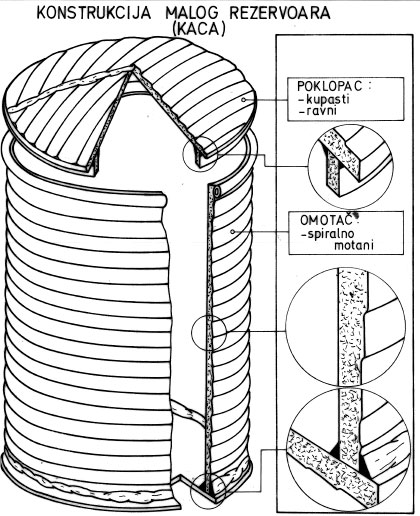
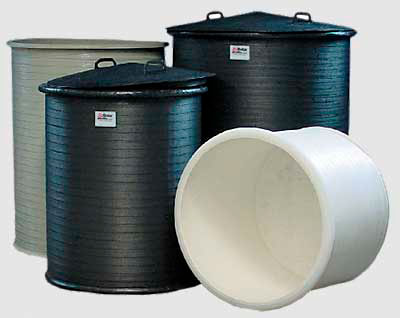
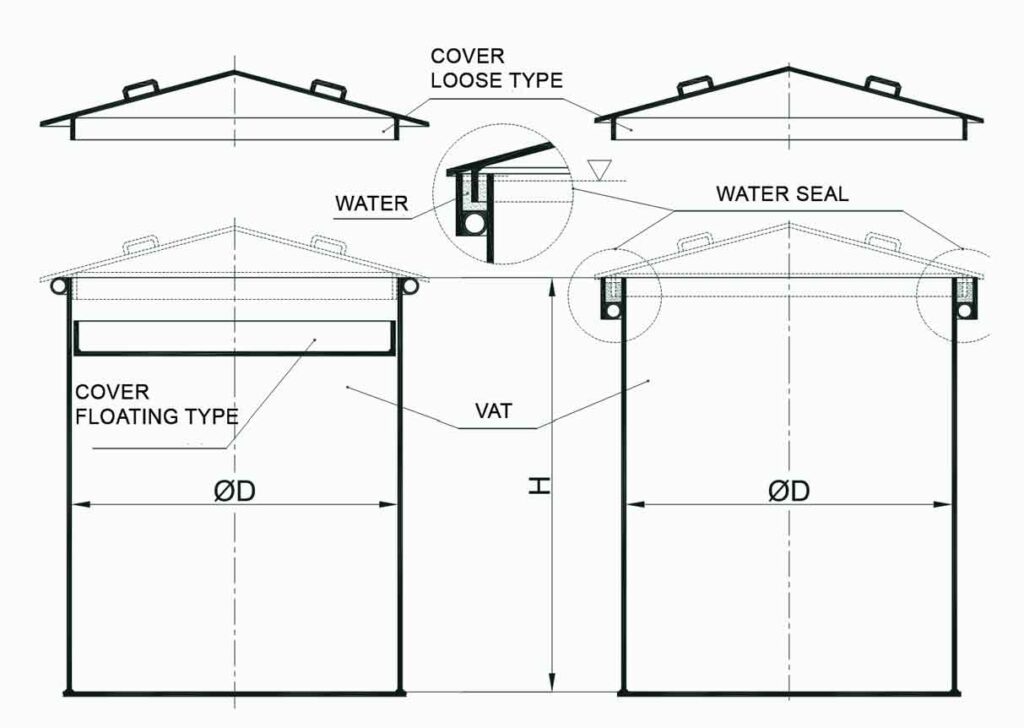
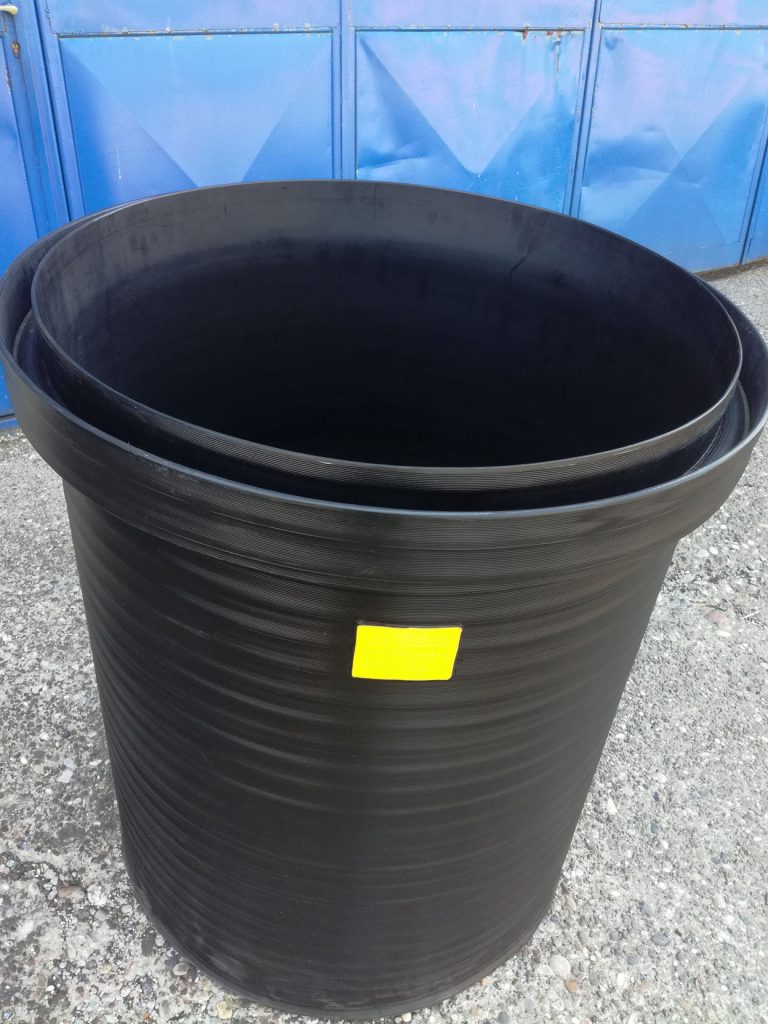

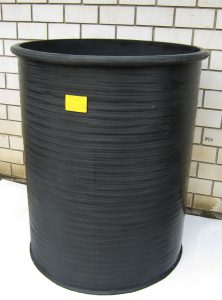
Vertical plastic overground tanks – type B
Krušik Plastika a.d. manufactures vertical plastic types tanks in maximum cubic capacities up to 50 m3 (50 000 lit.), and the maximum diametre is up to Ø 3 200 mm. These are the so called vertical above-ground tanks – cisterns. They are not intended for burying, i.e. covering with soil, but for placing on a flat, rigid surface (base, support). In the standard variant, these tanks are manufactured with the flat bottom, which is in the horizontal position, cylindrical body (skin, wrapping) and slightly conical lid (top, roof).
At the demand of the customer, we can manufacture tanks with conical or inclined/tilted bottom (in both cases for easier or complete pouring out/discharging of liquid), as well as the tanks with a flat lid (roof, top). The connections (nozzles, fittings) can be placed at any position on the tank.
We are also able to equip our tanks with standard climbing equipment, for safe climbing to the top of the tank, such as: ladders, preferably with back protection brackets, walk-way platforms, protective fences, self-closing safety gates, etc. All these elements can be made either of metal (steel, aluminium…) or of GRP.
Connections can be anywhere on the tank, inspection holes are usually placed on the cover – the roof of the plastic tank, but if necessary, they can be on the cylinder itself, which is a more expensive variant due to the need to increase the thickness of the cylinder wall at the place of the inspection hole.
Horizontal plastics tanks – type C
Horizontal plastic tanks – cisterns, are manufactured in cubic capacities up to 200 m3 . We manufacture them in two basic variations:
- Horizontal underground (burying) tanks – cisterns which are intended for burying in the ground and covering with soil.
- Horizontal above-ground tanks – cisterns with a support, the so called legs (cradles).
In the standard variation they are manufactured as single-chambered with two slightly conical bottoms and with one manhole, and if needed, i.e. at the request of a customer, they can be with flat bottoms, with inner barrier/partition (the so called multi-chambered). These multi-chambered horizontal tanks have special usage as:
- sedimentation tanks (flow-through tanks with baffles/barriers), or
- plastics septic tanks – (plastics cesspits or cesspools) which are often manufactured as double- or triple-chambered, especially if they are of flow-trough type, because of sedimentation i.e. separation of the content.
It is also common practice that horizontal plastic tanks of relatively large volumes or overall dimensions, which are not suitable for transportation, are made from parts that are then joined into a whole on site by qualified and certified welders from our company. We have decades of experience and significant references in this field, so no tank is too big for us to build.
Thermal-insulated plastics tanks – type D
Thermal-insulated plastics tanks are usually applied in cases when the temperature of the medium inside the tank, must be different from the ambient (environment) temperature. The role of the thermal insulation of the tank is to slow down the exchange rate of thermal energy between the content inside the tank and the environment, without application of any additional heating or cooling devices, or at least to minimize the operating time of these devices in order to attain significant energy savings.
Thermo-insulated tanks are designed individually, upon customer’s request, while the thickness of the insulation layer is always determined on the basis of the exploitation conditions. In terms of practice, it is usual to perform thermal insualtion of the tank in two basic variants: as totally-insulated tank (so called “thermos tank”) and as a tank with thermo-insulated cylinder. The first variant, “thermos-tank”, is more expensive and it is usually applied in cases of relatively high themperature differences between the content of the tank and the environment, as well as in cases when long-term storage is necessary.
Thermo-insulated tanks are usually applied for needs of chemical, processing and food industry, as well as for catering and household needs.
The volumes, as well as the belonging dimensions, are equivalent to those of the tanks of Type B, while tanks with the volumes/dimensions combinations different than the standard ones can be delivered as well.
Krušik Plastika A.D. is able to deliver thermo-insulated tanks with proper heating devices, heaters, which can be installed either inside or outside the tank (between the outer-wall of the tank and the thermal insulation).
Capacity of heater, as well as the type and thickness of thermal insulation, is being chosen on the basis of relevant thermal calculations (calculation of the heat balance) – these calculations can of course be delivered to the customer with the supplied tanks.
For thermal insulation material, we use top quality materials produced by renowned domestic and international manufacturers, and the same applies to the heaters we install.
Our thermally insulated plastic tanks can normally be equipped with all kinds of standard connections and additional elements like all our other tanks.
Double-wall tanks – type E
Double-wall plastics tanks (double-skin plastics tanks) are applied mostly for purposes of storage of so-called dangerous chemicals, primarily for aggressive liquids (high-concentrated acids, alkali and liquid salts) as well as for substances which could endanger the environment in a very critical way. If some leakage occurs out of the inner (storage ) tank, the whole “dangerous” content will be held inside the outer (retention) tank.
The usual practice is to place so-called “leak detector” into the space between the inner and the outer tank. This is in fact the electronic device which detects the leakage and makes the alert by the proper signal.
We mainly produce double-wall tanks of a vertical type, because they are the most comon in practice, but we are also able to manufacture double-skin tanks of a horizontal type. These horizontal tanks can be intended for both underground (burial) or overground installation.
The design of the vertical double-wall tanks is such that they basically consist of two bottoms (the inner and the outer bottom) and two cylinders (the inner and the outer cylinder). The inner tank is intended for long-term storage of substances, while the function of the outer tank is to retent the stored substance in case of an injury of the inner tank, in order to prevent endangering people and the environment.
Our double-walled plastic tanks can normally be equipped with all kinds of standard connections and additional elements like all our other tanks. It is also a practice to install a special sensor in the space between the two mantles – the so-called “leak detector” that signals with a sound and/or light signal if there is a possible leak between the two casings, and we are able to install such a sensor in any of our double-walled plastic tanks at the customer’s request.
Design and manufacturing of vertical double-wall (double-skin) tanks are normalized by EN 12573-2:2000.
Dimensions and volumes of our standard double-wall tanks are principally equivalent to those of our type-B tanks, in case of vertical tanks, and to our type-C tanks, in case of horizontal tanks. At the request of the customer, double-wall tanks can be made with volumes/dimensions combinations that are different than the standard ones.
Vertical tanks intended for burial - type F
These tanks, in their normalized variant (type F), represent the most economical (the most cost-effective) variant, of plastics tanks intended for burial, but we must note that this variant is a kind of compromise-variant : The compromise means that, unlike the horizontal tanks (type B), these tanks are not intended to be totally buried because their installation (burial) is limited by the following conditions:
- they are allowed to be buried not deeper than the height of the cylinder, while the cover (the roof) of the tank should neither be buried, nor covered by soil, sand, etc.
- they are allowed to be burried only at places (sites) with no ground water, i.e. at places (sites) where the level of ground water is permanently low so that there is not any possibility of contact between ground water and the buried tank;
- they are allowed to be buried only at places (sites) where the surrounding soil (ground) is firm and stable, i.e. where the surrounding soil, in which the tank is to be burried, is not soft, not unstable and where there is no risk of collapsing (falling down) of the soil;
- it must be assured that no surface waters whatsoever (rainfall waters, flood waters, torrential waters…), may come in contact with the buried tank – these waters, if potentially appear, must be evacuated, by means of proper bypass ducts, in order to prevent them to get in contact with the buried tank.
The constructive characteristics of these type of tanks are reinforced (ribbed) cylinder and a flat, i.e. membrane-type bottom.
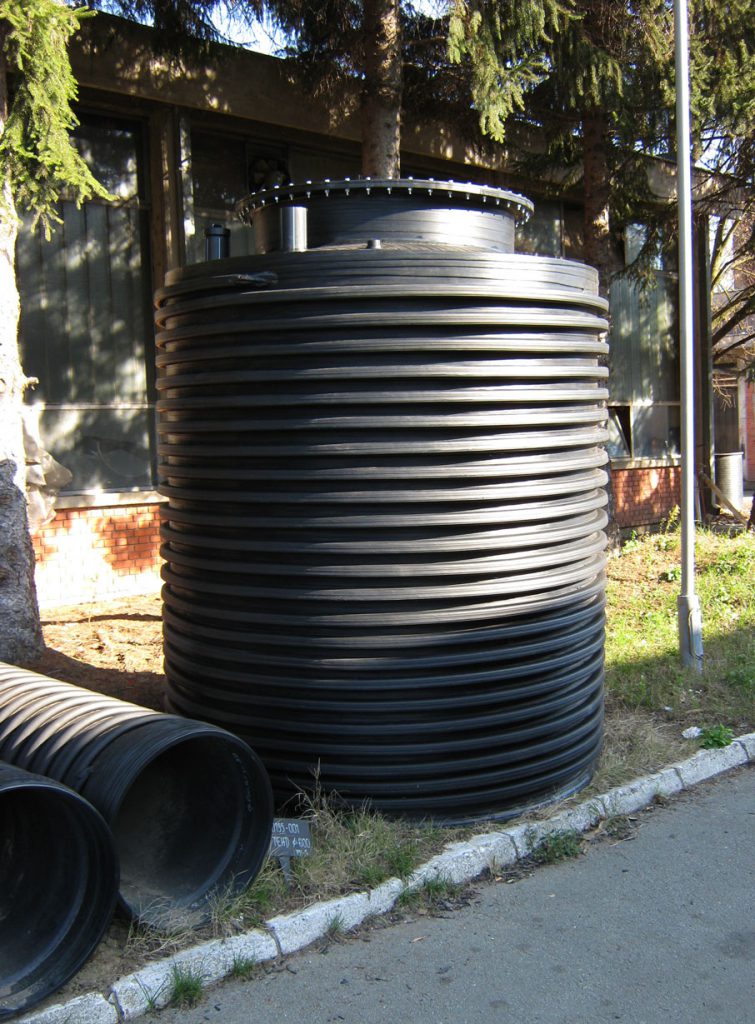
Eliptic tanks – type G
Due to increasing need for placing and installing of tanks in places with confined space, such as basements, garrages, smaller auxiliary rooms, portable cabins and modular buildings, as well as inside buildings where a tank must be taken in through door openings, via staircases etc., Krušik Plastika a.d. has decided to offer this type of tanks, as a standardized product, as well.
Due to the fact that eliptic tanks are more cost-effective than rectangular tanks, their market demand is getting higher during last years. These tanks are also known on the market as “narrow tanks” or “flat-like tanks”.
Note: At the request of the customer, we can produce tanks with other dimensions than those mentioned/stated. We can also manufacture tanks in any other capacity (volume) between the standard ones.

Tanks and vessels of special shapes and purposes and special products
Apart from our standardized types of tanks (A, B, C, D, E, F and G)K, rušik Plastika a.d. manufactures also a wide range of tanks and vessels of special shapes and purposes as well as special products such as:
- basins, plastics containers and safety pools – rectangular reservoirs,
- plastics scrubbers (absorbers) – apparatus (devices) intended for “washing” of waste gaseous, smokes and evaporations (vapours),
- air ducts and duct elements – “chimneys” for waste gases exhaust as well as for air exhaust,
- plastics pontoons – pontoon-pipes, plastics boats and floating elements,
- plastics tanks and vessels for devices for treatment of waste waters.
